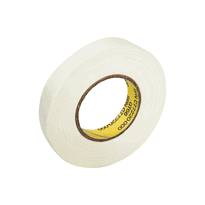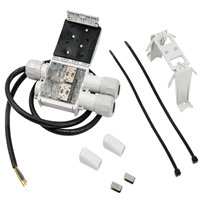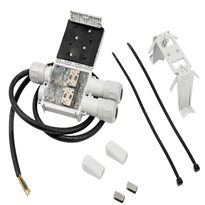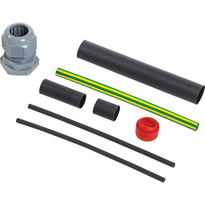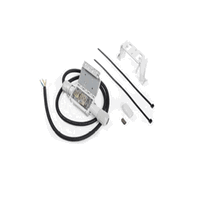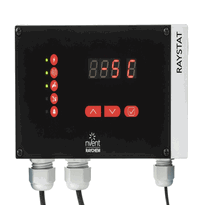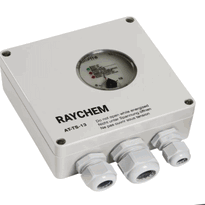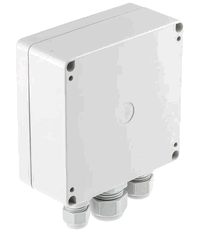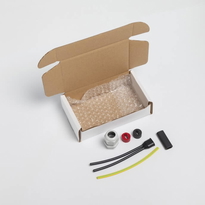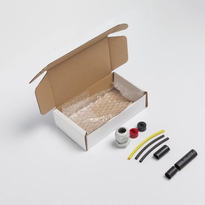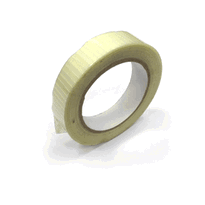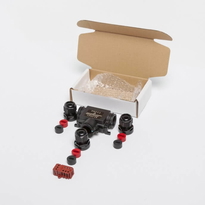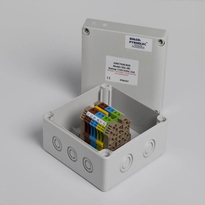Heat Trace Wire for Pipes
Heat trace wire for pipes includes a variety of types, such as constant wattage, self-regulating, mineral insulated, and power-limiting cables, each tailored for specific applications and environments. Proper installation is crucial and involves correct placement, secure fixing, and suitable insulation to ensure effective heat transfer, prevent freezing, and maintain desired process temperatures.
Adherence to industry standards such as UL 515 and BS 7671 is essential to guarantee safety and reliability. Regular maintenance and inspections support the longevity of the heating system, ensuring continuous performance.
Understanding these essential aspects allows for the effective thermal management of piping systems across various settings in the UK. Careful selection and installation of heat trace wiring contribute significantly to operational efficiency and safety in industrial, commercial, and domestic applications.
Understanding the Different Types of Heat Trace Cables
Understanding the different types of heat trace cables is essential for selecting the most suitable solution for specific piping and process requirements. Each type offers distinct benefits and considerations, ensuring optimal performance and safety.
Constant Wattage Cables
Constant wattage cables provide a fixed heat output across their entire length, regardless of temperature fluctuations. This consistent power delivery can lead to potential overheating if not properly controlled, often necessitating the use of external devices such as thermostats or controllers to maintain desired temperatures.
These cables are typically chosen for applications where a uniform heat output is required and environmental conditions are stable.
Self-Regulating Cables
Self-regulating cables adapt their power output based on the temperature of the pipe or ambient environment. As the temperature increases, the cable reduces its wattage, thereby preventing overheating and minimising energy consumption.
This intelligent behavior allows for safer operation without the need for additional controls in many cases. They're especially suitable in applications with variable or unpredictable temperature profiles where flexibility and energy efficiency are priorities.
Mineral Insulated Cables
Mineral insulated cables are designed for demanding environments, including high-temperature and potentially hazardous settings. Constructed with a stainless steel sheath and mineral insulation material such as magnesium oxide, these cables offer exceptional durability and resistance to mechanical damage, chemicals, and moisture.
Due to their robust construction, installation requires specialized expertise. They're ideal for critical or severe applications where longevity and reliability are paramount. Their use aligns with advanced manufacturing techniques, which focus on producing durable and high-performance products.
Power-Limiting Cables
Power-limiting cables incorporate built-in resistance elements that prevent the risk of overheating by controlling the maximum heat they can produce. They provide a balanced level of control, offering safety features similar to self-regulating cables but with a more straightforward design.
These cables enable efficient energy use while maintaining safety standards, making them suitable for a wide range of applications where moderate temperature regulation is sufficient.
Conclusion
Selecting the appropriate heat trace cable depends on the specific temperature regulation requirements and environmental conditions of the application.
Whether needing constant heat output, adaptive regulation, or high durability in challenging environments, understanding the characteristics of each type ensures an informed decision that promotes safety, energy efficiency, and system longevity.
Key Factors in Installing and Maintaining Heat Trace Systems
Proper installation and maintenance of heat trace systems are essential for ensuring their safe, efficient, and durable operation.
Correct cable placement involves positioning the heat trace cable at the 4, 5, 7, or 8 o’clock position on the pipe to optimize heat transfer and protect the cable from mechanical damage. Securing the cable securely at intervals of 15 to 30 centimeters prevents movement and maintains close contact for effective heating. It is also advisable to use insulation cladding around the heat trace to enhance energy efficiency and protect against environmental damage.
When installing on non-metallic pipes, applying a layer of aluminium foil tape enhances heat conduction.
Prior to installation, it's important to verify heat loss calculations, inspect the pipe integrity, and clean the surfaces thoroughly to ensure proper adhesion and function.
Additionally, plan cable routes to include extra length for connections and allow for future adjustments.
It's also crucial to verify electrical continuity through resistance testing to confirm system safety and proper operation.
Proper installation and maintenance practices help to ensure your heat trace system operates effectively and remains safe throughout its lifespan.
Common Applications and Benefits of Pipe Heating Solutions
Pipe heating solutions are widely used across numerous industries in the UK to tackle specific operational challenges and safeguard infrastructure. These systems prevent pipe freezing and damage in cold weather conditions by maintaining consistent temperatures, thereby reducing costly repairs and unplanned outages. Heat trace cables are securely fixed along pipes or equipment surfaces to provide evenly distributed heat. Industries such as oil and gas, manufacturing, and agriculture rely heavily on these solutions to ensure the continuous flow of materials and maintain process stability. Heat trace systems are essential in these sectors for sustaining industrial process temperatures, controlling viscosity, and preventing pipes from freezing or overheating, which could otherwise lead to significant operational disruptions. In residential and commercial settings, pipe heating solutions play a crucial role in preventing the formation of ice dams, protecting outdoor plumbing systems, and ensuring a reliable water supply during the colder months. By doing so, they help to avoid water damage and minimize maintenance needs. The use of insulation materials can further improve the efficiency of these systems by reducing heat loss and conserving energy. Ultimately, pipe heating systems enhance energy efficiency, extend the lifespan of pipelines, and support the seamless operation of vital infrastructure. Their implementation offers resilience against the challenges posed by cold weather, making them an indispensable component in maintaining operational safety and reliability across various sectors in the UK.
Safety Standards and Best Practices for Heat Trace Wire
Compliance with safety standards and regulations is essential to ensure the safe and reliable operation of heat trace wiring systems. Adhering to recognized standards such as UL 515 and complying with national electrical codes like BS 7671 guarantees proper installation and mitigates hazards. Proper certification by authorized bodies confirms product safety and performance, while thorough documentation supports regulatory compliance. Best practices for installation include using appropriate personal protective equipment (PPE), including arc flash and shock protection, during installation and maintenance. - Ensuring that qualified personnel follow manufacturer instructions and safety guidelines. - Implementing proper grounding and bonding to prevent electric shock. - Conducting risk assessments prior to installation to identify potential hazards and define safety controls. Regular training and updates for technicians are crucial to maintain safety standards over time. Following these standards and practices helps to minimize fire risks, promotes system longevity, and ensures workplace safety. This commitment fosters a community of professionals dedicated to the safe and effective operation of heat trace systems across the UK, supported by compliance with industry standards and safety protocols.
Conclusion
Selecting and installing the appropriate heat trace wire requires careful consideration of cable type, application environment, and adherence to safety standards. Proper installation, maintenance, and regular inspections are vital to ensure effective operation and to prevent hazards such as electrical failures or pipe damage.
By understanding key factors and following best practices outlined in this guide, UK professionals can enhance system reliability, optimise energy efficiency, and ensure compliance with relevant safety regulations. Ultimately, these measures help deliver safe, durable, and cost-effective pipe heating solutions.








